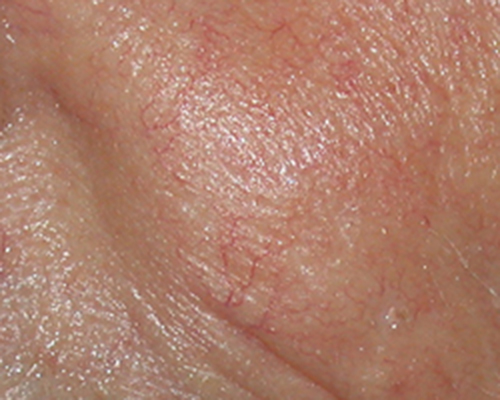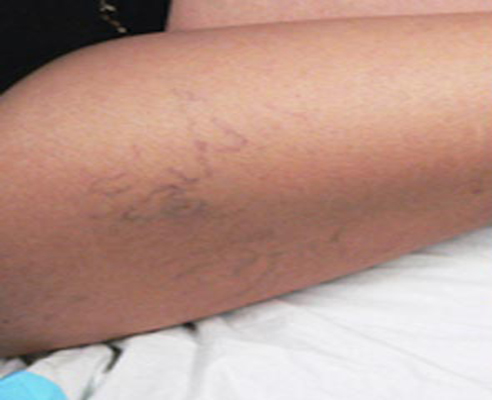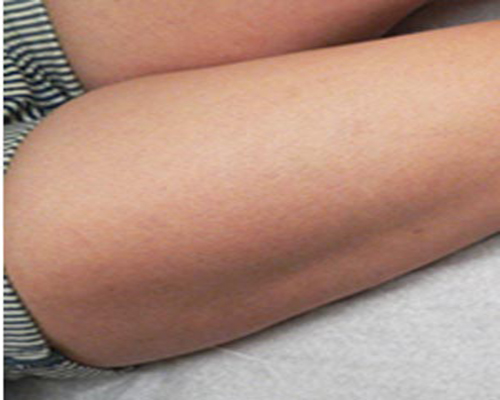Leg Vein Treatment
Remove Unsightly Spider Veins with Laser Leg Vein Treatment
Spider veins are thread-like veins on the surface of the skin, most commonly on the legs and face, but may also be found elsewhere on the body. These veins will never become the large bulging varicose veins. Early treatments included radio waves and support stockings delivering varying degrees of success. The drawbacks to these older treatments include scarring, recovery time, cost and poor results. At Rajeunir Medical Spa we have chosen the latest advances in laser technology for leg vein treatment; a proven procedure that is non-invasive, non-surgical, safe and effective, with minimal risk to the skin.
*Individual results may vary
FAQ's
The laser beam is attracted to the blood penetrating the skin and heating the targeted vessel. The heat coagulates the blood inside the vessel causing the vessel walls to collapse.
Yes. Rajeunir Medical Spa uses only FDA-approved technology. Lasers and advanced light systems have been used safely on millions of patients of all ages worldwide. These systems treat only the targeted spots, leaving the surrounding tissue intact.
Larger veins are treated first. Using the appropriate wavelength of laser light we administer the treatment to the vein. Any discomfort can be eased with the application of cool compresses.
Significant improvement is realized in most cases with one or two treatments. Most patients undergo 3-5 treatments for long-term results. However, new veins may occur and additional treatments may be required. Treatments are performed in 8-10 week intervals.
Though many veins clear instantly, some continue to resolve for up to 12 weeks after treatment. You may resume normal activity within 24 hours.
- Discontinue sun tanning and the use of tanning beds and self-tanning creams 4 weeks before and throughout the treatment course. This will reduce the chance of skin color changes, and development of new lesions.
- Always use an SPF 30 or greater sunscreen on all exposed treatment areas and re-apply every 2 hours throughout the day. Wear protective hats and clothing.
- Discontinue use of exfoliating creams such as Retin-A and other skin exfoliating products 2 weeks prior to and during the entire treatment course.
- Discontinue use of Oral Isotretinoin/Accutane for 6 months prior to and during treatment. Accutane changes the underlying structure of the skin which may cause an increase skin sensitivity to light.
- If you have a history of Herpes outbreaks in the area of treatment you should consult your Primary Care Provider for medical evaluation and possible antiviral therapy prior to treatment.
- An accurate diagnosis, by a Physician, of abnormal lesions or brown spots prior to treatment is necessary before treatment of lesions. Failure to do so, may delay proper treatment.
- A mild sunburn-like sensation is expected. This usually last 2-24 hours but can persist up to 72 hours. Mild swelling and/or redness may accompany this, which usually resolves in 2-3 days. In some cases, prolonged redness or blistering may occur.
- Apply cool/ice compresses and/or 1% Hydrocortisone cream to treatment areas for 10-15 minutes every hour for the next 4 hours, as needed, to reduce discomfort or swelling.
- The treated area can be gently cleansed and polysporin can be applied if needed.
- Pigmented lesions may initially look raised and/or darkened with a reddened perimeter. The lesion is usually healed in 7-21 days, but may take 4 weeks to completely fade.
- Direct sun exposure to the treatment area is prohibited from whatever source (natural sun, tanning beds, self-tanning creams) and the use of SPF 30 or greater is mandatory.
- Be aware of the likelihood of coincidental hair removal in the treatment area.
- Do not pick, scratch or remove scabs. This will help decrease the chance of infection and scarring.
- Until redness has completely resolved avoid swimming, hot tubs/Jacuzzis and activities that cause excessive perspiration.
Before & After Leg Vein Treatments




